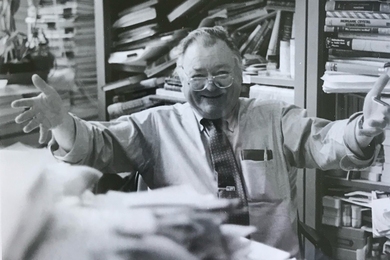Compaq Computer Corp. has donated historic computer artifacts from the MIT Whirlwind and SAGE projects to the MIT Museum. The artifacts, which total some 65 items, were part of Digital Equipment Corp.'s corporate collection and form the last major collection of these historic MIT computers to be in private hands.
"A vital part of the museum's mission is to document and preserve MIT's history," said Jane Pickering, museum director. "The museum had little material from the Whirlwind and SAGE [Semi-Automatic Ground Environment] projects and these artifacts fill a major gap in the science and technology collections. We are thrilled to accept this donation of irreplaceable parts of MIT's heritage from Compaq."
"The Whirlwind Project was one of the most innovative and influential computer projects in the history of computers," noted Deborah Douglas, the MIT Museum's curator of science and technology. Begun in 1944 and headed by Professor Emeritus Jay Forrester, Whirlwind was the first digital computer built specifically for real-time control. Forrester invented magnetic core memory, which replaced vacuum tubes and mercury delay lines with a much more compact and reliable technology. It became the industry standard until replaced by semiconductor memories in the 1970s. Even then, magnetic cores remained in use for many years in mission-critical and high-reliability applications such as the Apollo Guidance Computer.
The Whirlwind computer became the "brain" for the Semi-Automatic Ground Environment air defense system developed by MIT's Lincoln Laboratory in the 1950s. "The SAGE system coordinated the complex system of radar, aircraft, telephone lines, radio links and ships that would detect and identify aircraft when they entered US airspace," Douglas said. "This project enabled the American computer industry to learn how to build large, interconnected, real-time data processing systems--a direct descendent of SAGE is the computer system used to make airline reservations."
Several of the donated artifacts are now on permanent display at the museum.
A version of this article appeared in MIT Tech Talk on September 26, 2001.






